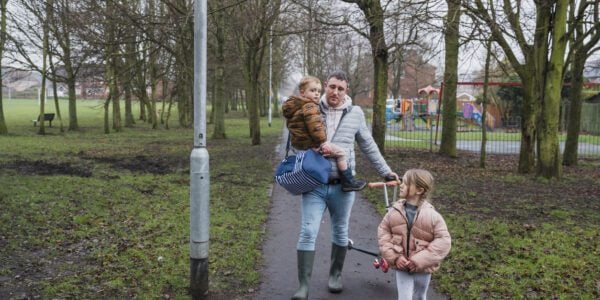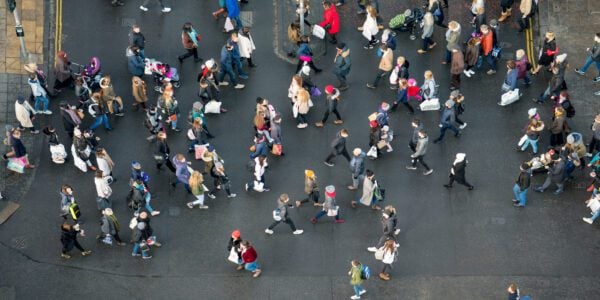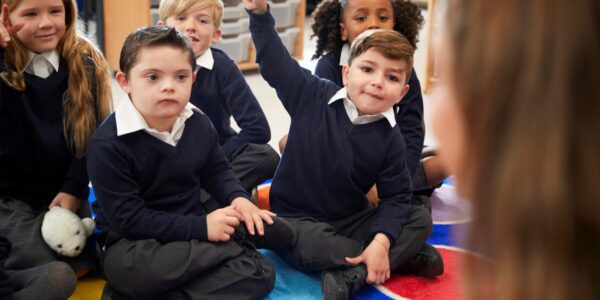
27/01/15
4 min read
Youngest children and poorer households worst hit by Coalition’s selective cuts, according to major new report.
Poorer groups have been worst affected by changes to direct taxes, benefits and tax credits despite the Coalition’s promise that the rich would carry the burden of austerity, according to a major new report from LSE and the Universities of Manchester and York. As a result, poverty has been increasing and will get worse in the next five years.
The report also reveals that families with young children have been hit harder than any other household type under the Coalition’s cuts despite early rhetoric highlighting the importance of the “foundation years”. Real spending per child on early education, childcare and Sure Start services fell by a quarter between 2009-10 and 2012-13 and tax-benefit reforms hit families with children under five harder than any other household type.
The authors acknowledge that the Coalition faced a high level of debt and current budget deficit following the global financial crisis. In response it made some strategic choices: not to cut the NHS (in cash, though not in need terms) nor schools; to increase spending on pensions; to raise the income tax threshold and to cut the top rate of tax.
Its tax and benefit decisions meant that cuts to benefits and tax credits that hit low income families hardest were offset by tax reductions for better-off households and made no impact on the deficit. Meanwhile its choices to protect very large areas of public spending meant that its austerity programme was more limited in practice than its rhetoric suggested, and that austerity measures were concentrated on particular policy areas. Year-on-year public spending has dropped less than 3 per cent, but cuts of around a third have been made to ‘unprotected’ services, including those for pre-school children under five, vulnerable and older adults needing local authority social care. In practice, people with health and care needs and children moving from pre-school to university frequently cross the boundary between protected and unprotected services. Even ‘protected’ areas such as the NHS have faced rising demands on fixed or falling budgets.
These overall conclusions are based on a comprehensive and authoritative analysis of policy, spending, outcomes, and trends across nine different areas of social policy. Separate reports are available for each, covering reforms as well as spending and highlighting challenges for an incoming government. They provide detailed facts and analysis to underpin the debates running up to the general election in May.
The main findings show:
- Although the Coalition stressed the importance of the “foundation years”, in fact families with children under five saw significant cuts to services – real spending per child on early education, childcare and Sure Start services fell by a quarter between 2009-10 and 2012-13. In addition, tax-benefit reforms hit families with children under five harder than any other household type.
- Despite a 10% rise in the population aged 65 plus during the Coalition period, the number of adult social care users fell 7% per year. Care at home and other community-based services were hit especially hard.
- Although one Coalition stated aim was that the better-off would carry the greatest burden from deficit reduction, changes to direct taxes, benefits and tax credits were mainly regressive, as cuts to tax credits and cash benefits took more away from those in the bottom half than they gained through higher tax allowances. The savings from these cuts were not sufficient to contribute to deficit reduction, however, as they were offset by the costs of lower direct taxes for better-off groups. Estimates suggest that poverty increased after 2012/13 and will get worse in future years.
- There was a 17% fall in the number of adult learners between 2009/10 and 2013/14 as funding for adult skills was heavily cut. Despite the controversial hike in tuition fees, increasing numbers of disadvantaged young people are going to university, but the numbers of part-time and mature students dropped by 40%.
- While health was protected relative to other expenditure areas, real growth rates were extremely low by historical standards and a number of key indicators suggest increasing pressure on the system. Health inequalities remain deeply embedded.
- Steps were taken to stimulate home ownership through Help to Buy, but government spending on housing in the UK was cut by 35% and spending on new homes by 44% in real terms 2009/10-2013/14. In contrast, and despite welfare reforms, housing benefit expenditure continued to rise.
- Growth in self-employment drove the recovery in the labour market but dramatic falls in average real earnings for all types of workers has affected households’ living standards, consumption and government tax receipts. The outcome is that household budgets have been squeezed and the government’s deficit reduction plans have been affected.
- Neighbourhood renewal activity has been dramatically cut from around £500m a year to around £32m a year. It is now seen as a local responsibility, drawing on a strategy of supporting local economic growth and community and voluntary activity. But so far these new strategies are performing well below expectations
The research follows a similar review of the Labour social policy record, published in 2013, Labour’s Social Policy Record: Policy, Spending and Outcomes 1997-2010. Both were funded by the Nuffield Foundation, Joseph Rowntree Foundation and Trust for London.
There are eight individual papers covering employment, taxes and benefits, health, adult social care, housing, children under five, further and higher education and skills, and area regeneration. There is also an overview The Coalition’s Social Policy Record: Policy, Spending and Outcomes 2010-2015. A further paper on schools will be released on February 10th to take in the detailed 2014 GCSE results published at the end of January.
Programme leader, Professor Ruth Lupton of the University of Manchester said:
“ There is more to the Coalition than cuts. Its major legacy may turn out to be its rapid reforms of the schools system, the NHS, and welfare benefits. But its decisions on where to cut and where to spend have limited its scope either to reduce the debt or protect the poor”.
CASE director, Professor John Hills, said:
“Protection of some of the core parts of the welfare state from the greatest cuts, and initial protection of the value of benefits, meant that those at the bottom and important services were initially shielded from the worst effects of the recession. But in the second part of the Coalition’s period, selective cuts to benefits and to unprotected services have begun to take their toll, leaving the next government, of whatever kind, with much greater social policy challenges than the Coalition inherited.”





















































